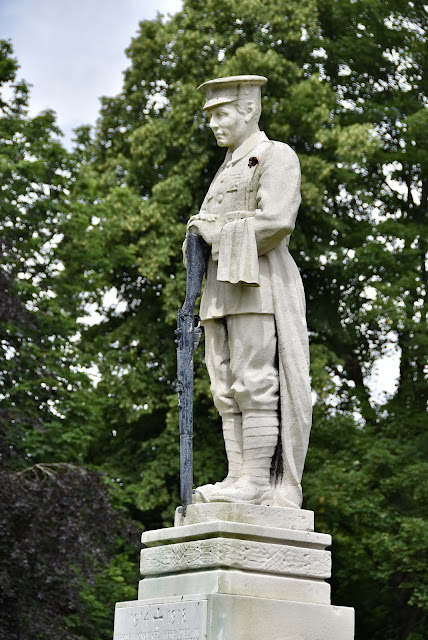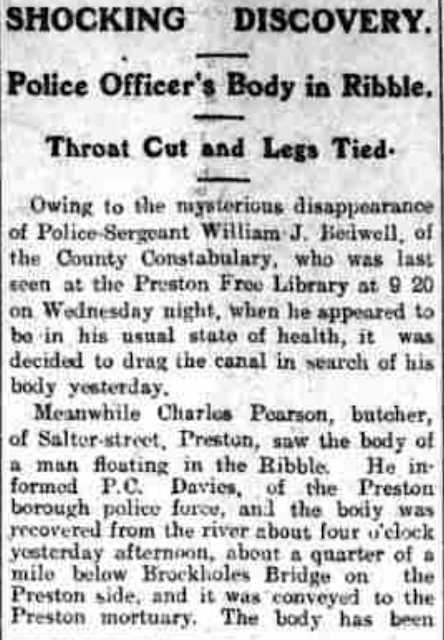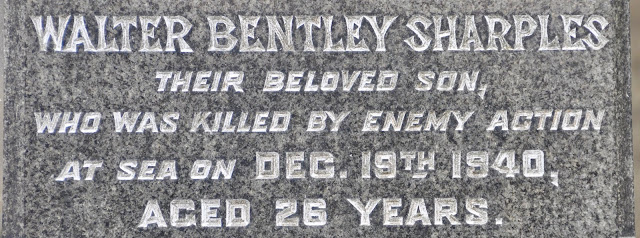Spectacular CWGC Special Memorial in West Yorkshire Cemetery
At Keighley's Morton Cemetery, there is a spectacular Commonwealth War Graves Commission Special Memorial commemorating 22 Commonwealth burials of the First World War. It consists of a Portland Stone statue of a Soldier and two panels upon which are carved the names of 22 soldiers who died of Sickness or Wounds at Keighley War Hospital.


My first port of call was to look at information on the Commonwealth War Graves Commission website.
Graves Registration Report
According to William J Ball, Area Inspector completed on 22 April 1922.
There are 22 Commonwealth burials of the 1914-1918 war commemorated here on panels adjoining a Special Memorial in the form of a life size Portland Stone statue of a First World War Soldier upon a decorated podium. There are an additional 6 Commonwealth burials of the 1939-1945 war, individually marked, throughout the cemetery.
In Grateful Memory of these men who served in the Great War, and died of Sickness and Wounds in the Keighley War Hospital
Monument - figure of Soldier in uniform in Limestone (probably Bath] on GritStone Base (about 20 feet high)
Inscription Below:
Their Name Liveth For Evermore
Category of Graves:
Graves in Special Plot (C) assigned by LocalAuthority for War Graves but not under Military Control.
There is a discrepancy here as only 21 of the 22 servicemen listed on the memorial are actually buried in front of the memorial. Gunner Christopher Brown Royal Field Artillery who served with C Battery, 174th Brigade is buried separately towards the bottom of the cemetery. I am presuming this was because he was a local man. A CWGC headstone has been erected on the family grave. The CWGC Area Inspector records him as being buried in an isolated grave in the Civilian Cemetery, noting that he lies in a plot intended for three burials - presumably the other two places were for his parents.
I was quite interested to see that the CWGC War Grave Register had been amended following the removal of a large number of German graves were exhumed and removed to Cannock Chase's German War Cemeteries after the Second World War. What happened [I wonder] to the German MemoriaL which was designed by one of the interned German Officers? Probably broken up, I guess?


The Imperial War Museum's War Memorial Register has made details of the memorials construction under a Creative Commons licence - ¢his information is made available under a Creative Commons BY-NC licence.
© WMR-28621
IWM War Memorial Register
The memorial was unveiled August 12, 1921 in a ceremony attended by local clergy and dignitaries and dedicated by the Bishop of Bradford.
FIGURE OF A SOLDIER IN MOURNING POSE WITH HEAD BOWED AND RIFLE REVERSED. ON SQUARE PLINTH WITH TWO FLANKING PANELS DECORATED AS BELOW. WHOLE MEMORIAL STANDS ON CRUCIFORM BASE FLANKING PANELS DECORATED WITH CARVED RELIEF DEPICTING ANGELS ON FRONT FACE AND LIONS ON REAR
1914 - 1918/ THOSE HONOURED HERE DIED IN/ THE SERVICE OF THEIR COUNTRY/ AND LIE BURIED NEAR THIS SPOT/ (NAMES)
Components
- Plinth
- Measurements: height 840MM, width 2070MM
- Materials: Stone - Portland
- Base
- Measurements: height 920MM, width 2070MM
- Materials: Stone - York
- Figure
- Measurements: Undefined
- Materials: Stone - Portland
War Memorials Trust
VERY UNUSUAL MEMORIAL IN THAT IT APPEARS TO HAVE BEEN CONSTRUCTED AS A LOCAL INITIATIVE TO COMMEMORATE SERVICEMEN WHO DIED IN KEIGHLEY WAR HOSPITAL AND THEN SEEM TO HAVE BEEN TRANSFERRED TO THE CWGC. THIS PROBABLY EXPLAINS WHY THE NAME PANELS HAVE RECENTLY BEEN RE-CUT WHILST THE MORE DECORATIVE ELEMENTS OF THE MEMORIAL ARE QUITE WEATHERED. THE RIFLE IN PARTICULAR HAS DETIORATED QUITE BADLY
Here are a selection images of the memorial:









































